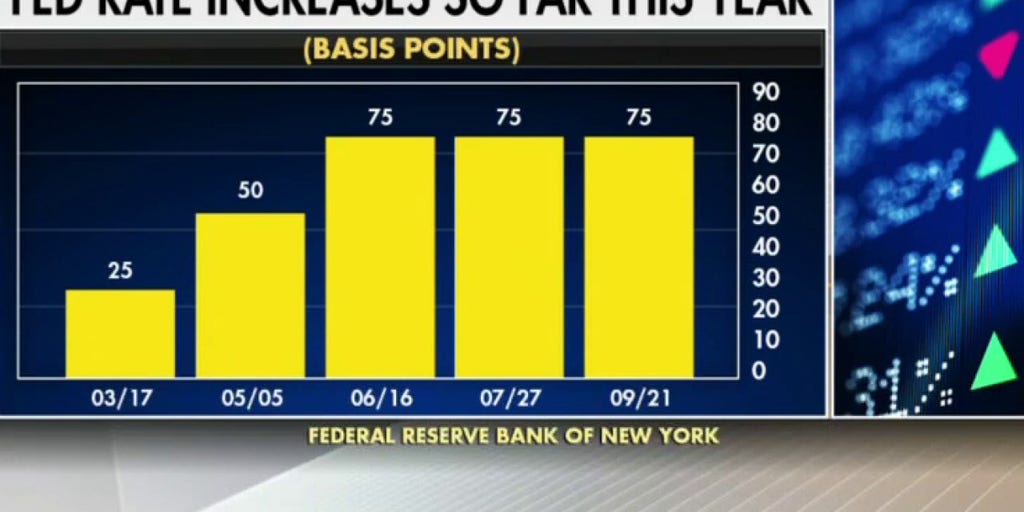Why The Federal Reserve Lags Behind On Interest Rate Cuts

Table of Contents
Data Dependency and Economic Indicators
The Fed's decision-making process heavily relies on economic indicators. However, these indicators, such as GDP growth, unemployment rates, and inflation reports, are often lagging indicators. This means they reflect past economic activity rather than providing a real-time picture of the current economic situation. This inherent data lag is a primary reason for delays in implementing interest rate cuts.
- GDP growth figures often come out months after the actual economic activity has occurred, offering a delayed reflection of economic performance.
- Inflation data can be volatile and influenced by external factors like energy prices and supply chain disruptions, making accurate interpretation challenging. Understanding the nuances of core inflation versus headline inflation is crucial for the Fed's analysis.
- Employment reports, while valuable, can lag behind shifts in the labor market. For instance, a slowdown in hiring might not be immediately reflected in the official unemployment rate.
This reliance on lagging economic indicators inherently leads to delayed responses. By the time the data clearly signals an economic slowdown, the situation might have already worsened, requiring more aggressive, and potentially riskier, interest rate cuts. Effective data analysis and interpretation are vital, but the inherent time lag remains a challenge in timely monetary policy adjustments.
Inflation Concerns and the Dual Mandate
The Fed operates under a dual mandate: price stability and maximum employment. While interest rate cuts can stimulate economic growth and boost employment, they also risk fueling inflation if implemented prematurely. High inflation erodes purchasing power and can destabilize the economy in the long run. Therefore, the Fed prioritizes maintaining price stability, even if it means delaying interest rate cuts.
- Aggressive rate cuts could exacerbate inflationary pressures, especially if the economy is already experiencing strong demand.
- The Fed prioritizes maintaining price stability to prevent long-term economic damage. Sustained high inflation can lead to significant economic instability.
- Balancing inflation control and economic growth is a complex and delicate act, requiring careful assessment of various economic factors and potential risks.
The Fed's cautious approach to interest rate cuts, especially in the face of elevated inflation, reflects its commitment to its dual mandate. This commitment often necessitates a careful and deliberate response, even if it means a delay in providing immediate economic stimulus.
Political and External Pressures
While striving for independence, the Fed is not entirely immune to political and external pressures. Political pressure to stimulate the economy might conflict with the Fed's assessment of the need to control inflation. Similarly, global economic events and uncertainty can significantly influence the Fed's response and decision-making processes.
- Political pressure to stimulate the economy quickly, especially during election cycles, may push for interest rate cuts even if the economic data doesn't fully support such a move.
- Global financial crises and economic downturns in other countries can create uncertainty and complicate the Fed's ability to accurately forecast the US economy.
- Geopolitical factors such as trade wars or international conflicts can significantly impact economic forecasts and influence the Fed's decision on interest rate cuts.
Navigating these external pressures while adhering to its mandate requires skillful leadership and transparent communication from the Fed. The delicate balance between independence and responsiveness to broader economic concerns is a constant challenge.
Internal Deliberations and Committee Dynamics
The FOMC's internal decision-making process is another factor contributing to the lag in interest rate cuts. The committee comprises diverse individuals with varied economic perspectives, leading to extensive debates and discussions before reaching a consensus.
- FOMC members debate economic data and its implications, considering different economic models and forecasting techniques.
- Reaching a consensus on the appropriate monetary policy response can be time-consuming, involving numerous meetings and internal deliberations.
- Differing perspectives on economic forecasts and the potential risks associated with interest rate cuts can lead to delays in decision-making.
This internal process, while vital for thorough consideration, can contribute to the perceived lag in responding to economic downturns. The inherent complexities of reaching a collective decision within the FOMC are a significant part of the delay.
Conclusion: Addressing the Lag in Federal Reserve Interest Rate Cuts – A Call to Action
The Federal Reserve's lag in implementing interest rate cuts stems from a combination of factors: data dependency on lagging economic indicators, the need to balance inflation concerns with its dual mandate, susceptibility to political and external pressures, and the complexities of internal deliberations within the FOMC. The Fed faces the challenging task of balancing competing objectives, requiring a delicate and nuanced approach to monetary policy. Transparent communication from the Fed is crucial to manage public expectations and ensure understanding of its decision-making process. Stay informed about Federal Reserve monetary policy decisions, and engage in further research on interest rate cuts and their impact on the economy. Understanding the complexities surrounding Federal Reserve policy and the importance of responsible economic analysis related to monetary policy is vital for responsible citizenship and informed economic decision-making.

Featured Posts
-
 Clarification Politique Borne Explore La Fusion De Renaissance Et Du Modem
May 10, 2025
Clarification Politique Borne Explore La Fusion De Renaissance Et Du Modem
May 10, 2025 -
 Access To The Stock Market Jazz Cash And K Trades Collaborative Effort
May 10, 2025
Access To The Stock Market Jazz Cash And K Trades Collaborative Effort
May 10, 2025 -
 Germaniya Riski Novogo Pritoka Ukrainskikh Bezhentsev Sprovotsirovannogo S Sh A
May 10, 2025
Germaniya Riski Novogo Pritoka Ukrainskikh Bezhentsev Sprovotsirovannogo S Sh A
May 10, 2025 -
 Manchesters Stunning Castle The Venue For A Major Olly Murs Music Festival
May 10, 2025
Manchesters Stunning Castle The Venue For A Major Olly Murs Music Festival
May 10, 2025 -
 Mdkhnw Krt Alqdm Asmae Lamet Wmsarat Mzlmt
May 10, 2025
Mdkhnw Krt Alqdm Asmae Lamet Wmsarat Mzlmt
May 10, 2025
